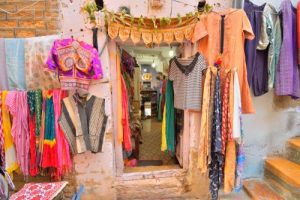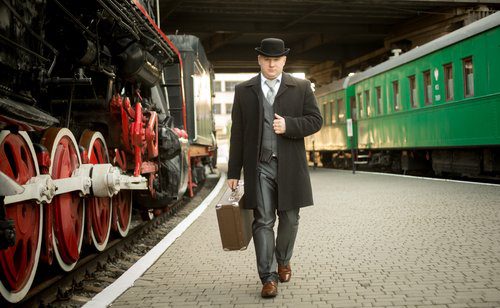Folks like Dorothy Nicol carve out their own stories by building a second-hand wardrobe. Nicol has spent years collecting vintage items which she later shared with audiences in her town’s Masonic hall. The material, some of which dates back to the 1800s, includes among other items, a love of flappers. Like many who invest in vintage, Nicol didn’t realize the significance of her collection. “I was just collecting dresses because I liked it, I didn’t realize there was so much to it.” What Nicol eventually found is that each item tells a story. With every dress that she was adding to her collection, Nicol was collecting the stories of local women — memories of the wedding through wedding dresses, an evening out through ball gowns, and the stories of mothers who were giving away their daughters in marriage encapsulated in a mother-of-the-bride dress.
Laira Martin, an LA journalist, argues that vintage spots are more than place to find items if you are on a limited-to-non-existent budget. She argues, “When I was younger, we went to thrift stores and Goodwill out of necessity. [Later,] I realized you can find great things at vintage shops. You don’t just shop there because you’re lower class and don’t have money.” Vintage aficionados are now demanding more unconventional and signature items that are of higher quality, better prices, are considered exclusive, unique and authentic in some capacity, and possess a compelling set of stories.

Today, a vintage clothing store offers much more than the stereotypical second-hand store. Many of these spaces now figure as boutique stores where recycled materials are “curated” rather than simply collected. In these cases, Madeline Horn of The Northerner reminds purchaser that when items are heavily curated, this often drives the price up. You can, for example expect an item that might have been $3 at a thrift store to be $30 at a boutique venue that specializes in vintage. In the case of thrift stores, where curating may not be as intense or thorough, shoppers may have to sort and dig through many underwhelming items until they find that one item with “personality” and a story worth recycling. The benefit of course is that the costs are much lower. Alongside finding a “story” and seeking out a price tag that fits your budget, consumers should also focus on finding items that meet their needed measurements (and stick to them), versing themselves in the specific care their items require (either when handling, storing or after each use), and knowing of any styling tips that can enhance the personality of their piece.

Vintage experts warn that having a vintage item with personality and “a story” is not the only thing that shoppers should look for. This is where organizations like Bank & Vogue come in. Today, it is common knowledge that unsold clothing and scrap textiles create waste. These materials often end up in trash bins alongside the shipping and packaging materials they came in. Bank & Vogue makes it part of our mission to work with their wholesalers to find used items that are of great quality and can be repurposed for a new owner — in order to minimize what their founder calls the “Crisis of Stuff.” In doing so, not only is Bank & Vogue looking to find new purpose for materials across domestic and international markets, but we are making a point to partner with private collectors who are interested in transforming their materials and minimizing the environmental impact of used clothing. Bank & Vogue recognizes that we can do our part to address the Crisis of Stuff and to reduce consumption and textile waste, while also not asking that consumers sacrifice style. This approach to the Crisis of Stuff certainly indicates that one of the ways to move forward is through an embrace of vintage. Contact us today to find out more!







